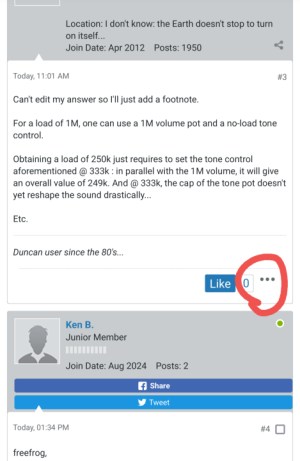I saw video on YouTube about installing a 250k/500k dual pot for selectable resistance on a guitar pickup for more tonal options. Then I saw this article on Seymour's website about making your own "dual pot".
https://www.seymourduncan.com/blog/tips-and-tricks/create-a-two-stage-potentiometer
OK, so...one question: why not use a 4 or 5 position slide switch, and install multiple different resistors for 250k, 333k, 500k, 750k, and 1000k settings?
Another question about this article, why does the author use a 500K pot, but then install a 510k resistor with the switch and say that this now gives him a 250k/500k switchable pot? Shouldn't he have used a 250k resistor?
https://www.seymourduncan.com/blog/tips-and-tricks/create-a-two-stage-potentiometer
OK, so...one question: why not use a 4 or 5 position slide switch, and install multiple different resistors for 250k, 333k, 500k, 750k, and 1000k settings?
Another question about this article, why does the author use a 500K pot, but then install a 510k resistor with the switch and say that this now gives him a 250k/500k switchable pot? Shouldn't he have used a 250k resistor?

